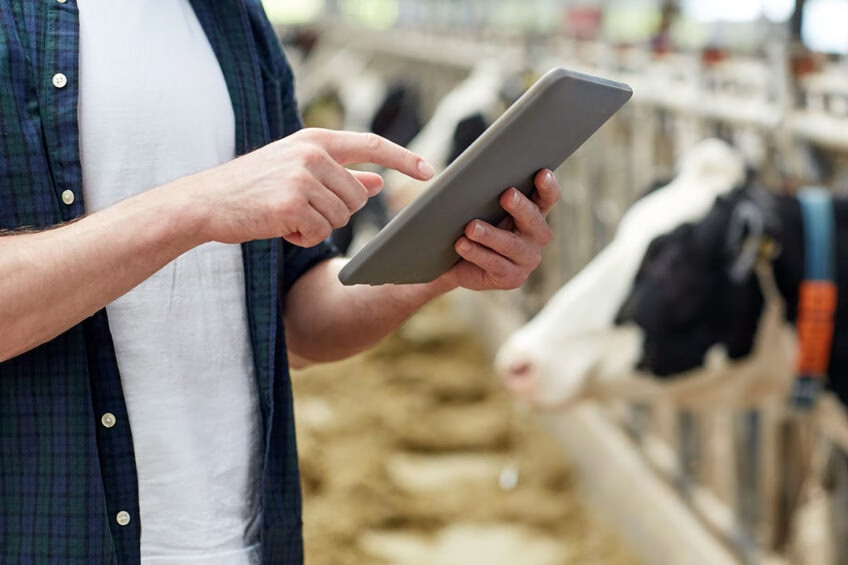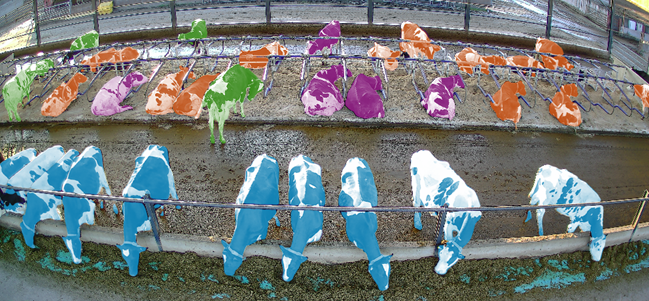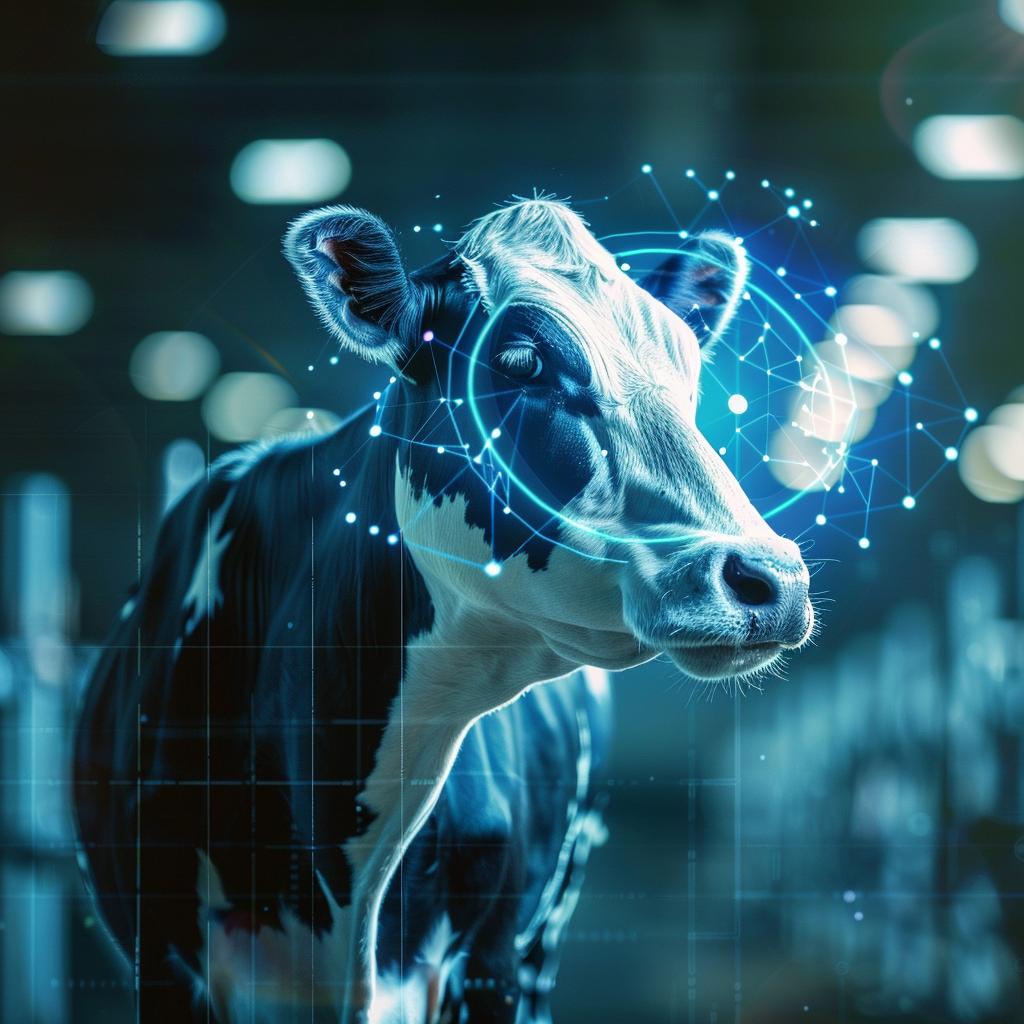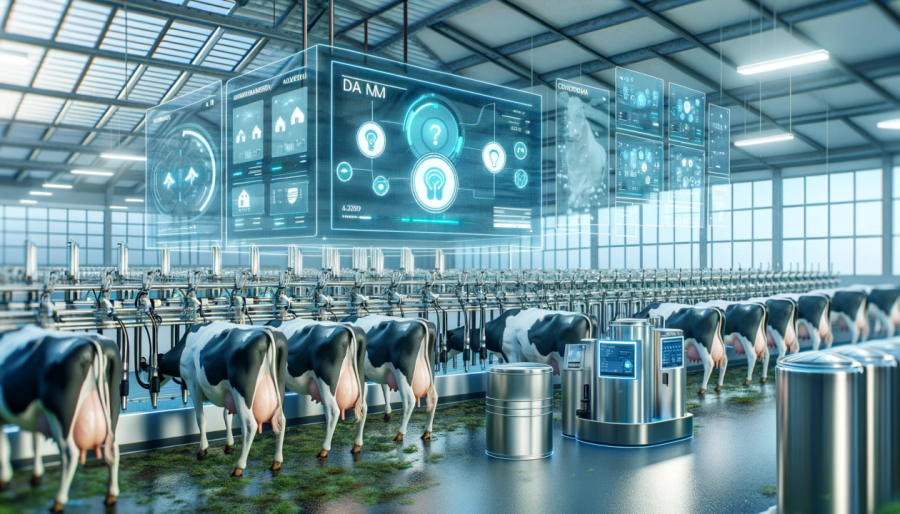See how AI transforms dairy farming and why owning your data is key for productivity and informed decisions. Ready?
Data is the new currency of contemporary dairy production. Today’s farmers are gathering more data, ranging from milk productivity and feed efficiency to health measurements and genetic information. Conversations with other dairy experts got me thinking about how important and revolutionary data has become. These talks highlighted a rising interest in using artificial intelligence (AI) to transform raw data into valuable insights.
During one such interaction, a software supplier revealed their newest AI-powered solutions, which would be provided at no additional charge. My immediate response was excitement and skepticism: what’s the catch? This prompted me to look at the more significant implications of AI in agriculture. While AI promises to increase efficiency and simplify processes, it also presents legitimate data ownership and privacy issues.
“Everyone would like to use software that makes data easier to digest or use AI to generate more productivity, and at the same time, no one wants AI coming for their job or their proprietary information.”
In the age of artificial intelligence, dairy farmers have an unparalleled potential to enhance their operations via data-driven decision-making. AI empowers farmers, giving them control over their operations. However, maintaining a balance is critical as we embrace these enhanced technologies. AI might assist in determining the optimal time to inseminate cows, improve feeding patterns, and even identify health concerns before they occur. However, we must stay attentive to who owns the data and how it is utilized. AI has great potential, but it also carries significant risks. As we traverse this scenario, the aim should be precise: producers must control their data to use its potential fully.
Transforming Dairy Farming: AI-Powered Precision for Increased Productivity and Efficiency
Artificial intelligence (AI) has enormous potential for dairy farming, with solutions to revolutionize the industry. Imagine not having to go through complicated dashboards to figure out what’s essential; instead, AI can alter how data is utilized, inspiring a new way of farming.
One notable use of AI in dairy production is activity monitors and sensors. These gadgets can monitor cow activity in real-time, alerting farmers to anomalies that might suggest health problems or inadequate production circumstances. Farmers may use such technologies to solve issues they might not have discovered otherwise immediately. According to studies, farms utilizing these gadgets enhance output by up to 81%.
Consider the advantages of AI in operational choices. An AI-powered system may evaluate market movements and weather predictions to help choose when to purchase feed. Feeding schedules and compositions may be adjusted to increase milk output depending on each cow’s requirements. This kind of individualized information may save time and money while also increasing the profitability of each gallon of milk.
AI’s timely, context-aware suggestions fit nicely into a farmer’s everyday operations. Instead of depending simply on gut instinct, farmers now get data-driven recommendations, altering decision-making processes. Skepticism is understandable when using new technology, but as many farmers have discovered, the advantages often surpass the early learning curve. By incorporating AI, dairy farming may move from reactive to proactive, resulting in a more efficient and productive sector.
Unlocking Economic Benefits: How AI Transforms Dairy Farming
The economic benefits of AI in dairy farming are substantial. As Purdue University’s research demonstrates, by adopting AI-based technology, dairy farmers can significantly reduce labor expenses. Automating regular chores such as milking, feeding, and health monitoring allows farmers to manage their resources more efficiently.
In terms of productivity, AI raises the bar tremendously. A case study from the University of Minnesota found that farms that used AI-driven management systems had a 15% boost in overall efficiency. When an AI system regularly observes cow behavior and health, it may identify diseases before they become serious, resulting in faster treatments and fewer output interruptions.
Higher milk production is another area where AI demonstrates its benefit. Advanced AI algorithms evaluate data from multiple sensors to improve feeding schedules and nutritional regimens, resulting in healthier cows and increased milk output. Research by the University of Florida discovered that farms utilizing AI-enhanced feeding systems had a 10% increase in milk output.
What’s the bottom line? AI not only modernizes dairy production but also provides significant economic advantages. By lowering costs, increasing productivity, and increasing milk production, AI enables dairy producers to have a more lucrative and sustainable future. This reassurance should instill a sense of security and optimism in the audience.
With technology improving, dairy farming is becoming brighter, more efficient, and kinder to animals. If you haven’t done it yet, maybe it’s time to consider bringing these tech advances to your farm.

Data Ownership: The Bedrock of Trust in AI for Dairy Farming
Data ownership and utilization are critical concerns for dairy producers. The importance of this issue cannot be overstated, especially when considering the adoption of new AI-powered technologies. Producers must maintain control over their data and its use to build trust in these innovative solutions.
Several software companies have introduced more detailed data usage clauses and practices to address these concerns. For instance, a supplier just guaranteed farmers unequivocally:
“Producers own the data. We shall not use their data unless they explicitly consent to its usage. We feel that we own whatever we’ve produced for data analytics. They have access to such metrics as users.”
This level of openness is a positive step forward. Ensuring farmers maintain ownership of their data and control over its use builds confidence. It promotes more comprehensive use of new technology. After all, it’s more than simply gathering data; it’s about providing producers with insights from that data while protecting their intellectual property.
Finally, the underlying premise is straightforward: producers should own their data. Dairy producers may confidently incorporate AI technologies into their operations since they control how their data is utilized.
Conversational Data: Revolutionizing Dairy Farm Management
Conversational data marks a fundamental change in how dairy producers use technology. Unlike conventional data systems, which often need human sorting and interpretation, conversational data uses AI to give real-time, simple insights in a natural language format. Consider having a virtual assistant that notifies you when a cow shows early disease indications or recommends the best time to buy feed based on market trends. This is not simply speculative thinking; it is the reality we are rapidly approaching.
The value of conversational data in decision-making cannot be emphasized. For example, with real-time animal health warnings, producers may take quick action to minimize illness escalation and improve overall herd health. Similarly, timely advice to change feeding practices or resource allocations may boost production while lowering expenses. No more gazing over complicated screens; choices may be as simple as speaking with a professional adviser.
However, we have yet quite to get there. One of the most critical difficulties remains the data latency. According to Wisconsin dairyman Mitch Breunig, the latency between data gathering and valuable insights might last months. This latency prevents prompt decision-making, resulting in lost opportunities and inefficiency. AI and data integration breakthroughs will be required to close this gap, allowing for real-time communication.
Ultimately, the idea is to turn raw data into a continuous, informative discussion between farmers and their technology, allowing for educated and timely choices. This transformation might reshape dairy production, making it more responsive, efficient, and lucrative.
Real-Time Data: The Antidote to Dairy Farming’s Frustrating Lag
Consider the instance of Mitch Breunig. During a PDPW conference, he explains a common difficulty in contemporary dairy operations: invaluable data irritating delay. Mitch emphasizes that it is already May as he examines his first-quarter financial statistics from January to March. If he identifies areas for improvement, executing such changes causes a substantial delay. As he progresses through the months, it is not until November, when the third-quarter data is available, that he can determine if his improvements have produced the anticipated effects.
This backward-looking character of data has a significant influence on decision-making. Even minor, incremental changes on the farm might take months to assess and verify, making agile responses practically impossible. Mitch’s story highlights a systemic issue. The delay generates an inefficient feedback loop, reducing productivity and slowing operational progress. His instance highlights a more significant business issue: the critical need for speedier, more conversational data systems on dairy farms. This would enable real-time decision-making, such as a timely and continuous discussion rather than sporadic and delayed communication.
Real-Time, Conversational Data: The Gateway to Instant, Informed Decisions
As we look to the future, the potential for data use in dairy production is enormous. Imagine a future in which real-time, conversational data helps producers make quick, educated choices. This data significantly minimizes the time lag that now afflicts the sector. Farmers may obtain actionable information right now instead of waiting months to evaluate and act on data, allowing them to pivot and alter their operations on the spot.
Consider a system that says, “Check the health of cow #302; she’s showing early signs of illness,” or “Today’s conditions are optimal for fertilizing that specific pasture.” These quick, conversational cues can change dairy farm operations by enhancing efficiency and output. By combining artificial intelligence with real-time data analysis, dairy producers can make fast and accurate choices to improve their operations.
However, the foundation of this future is built on trust. Producers must be confident in the data offered by these innovative technologies. Trust is not formed overnight; it is based on consistent, clear, and dependable evidence that has shown its usefulness over time. When producers trust the technology that supports their data, they are more likely to fully embrace new technologies, resulting in a feedback cycle of improved data accuracy and operational success.
The transition to a more data-driven future in dairy farming will be challenging, but the advantages exceed the dangers. Real-time, conversational data may be a game changer, allowing farmers to make more imaginative, timely, and effective choices. As technology advances, so will the ability of data to alter the dairy sector, making it more efficient and ultimately lucrative.
The Bottom Line
The use of AI in dairy production has enormous promise for increasing productivity and efficiency. However, the cornerstone of this change is to keep data ownership firmly in the hands of producers. This article discusses how AI technologies might transform operations by making data conversational and actionable in real time. However, this requires faith in technology providers’ data use practices.
At the core of this debate is the significance of quick, intelligible data transmission that can assist decision-making on the go. This change from historical data to real-time insights will allow farmers and ranchers to make more educated and quicker choices, eventually enhancing operational results.
How can the industry guarantee that technical improvements are accessible and trustworthy for all producers? The solution to this question will determine the future of dairy farming in the AI era.
Key Takeaways:
- AI-powered tools can offer significant benefits for dairy farming, such as better data management and improved productivity.
- Producers must be vigilant about their data ownership and ensure their inputs and outputs remain confidential and not used without consent.
- Good analytics should deliver actionable insights directly, making data more accessible and perceptible.
- Real-time, conversational data is crucial for timely decision-making in the dairy industry.
- Current data use on farms often lags, causing delays in implementing necessary changes based on new information.
- Trusting new technology, such as activity monitors and sensors, can enhance farm management and animal care over time.
- Producers need systems that provide immediate feedback to maintain a continuous and meaningful conversation with their data.
Summary:
Data usage in dairy farming is rapidly evolving, with AI-driven tools promising new levels of productivity and efficiency. However, as we embrace these advancements, data ownership, and real-time utility issues come to the forefront. Artificial Intelligence (AI) is revolutionizing dairy production by transforming raw data into valuable insights and enhancing operations through data-driven decision-making. Challenges such as data ownership and latency can impact prompt decision-making. Yet, activity monitors and sensors can provide real-time, simple insights, replacing gut instinct with data-driven recommendations that can increase output by up to 81%. The potential for data use in dairy production is enormous, but producers must be confident in the data offered by these innovative technologies. This article explores the critical role of data ownership, the transformative power of AI, and the need for real-time, conversational data to drive immediate, informed decisions on dairy farms.
Learn more:
- Dairy Farming 2.0: Harnessing AI for Efficiency, Health, and Future Sustainability
- The Power of AI: Revolutionizing Dairy Industry with Smart Cows and Farms
- How Data Collection Can Revolutionize Your Dairy Farm
 Join the Revolution!
Join the Revolution!
Bullvine Daily is your essential e-zine for staying ahead in the dairy industry. With over 30,000 subscribers, we bring you the week’s top news, helping you manage tasks efficiently. Stay informed about milk production, tech adoption, and more, so you can concentrate on your dairy operations.







 Join the Revolution!
Join the Revolution!







